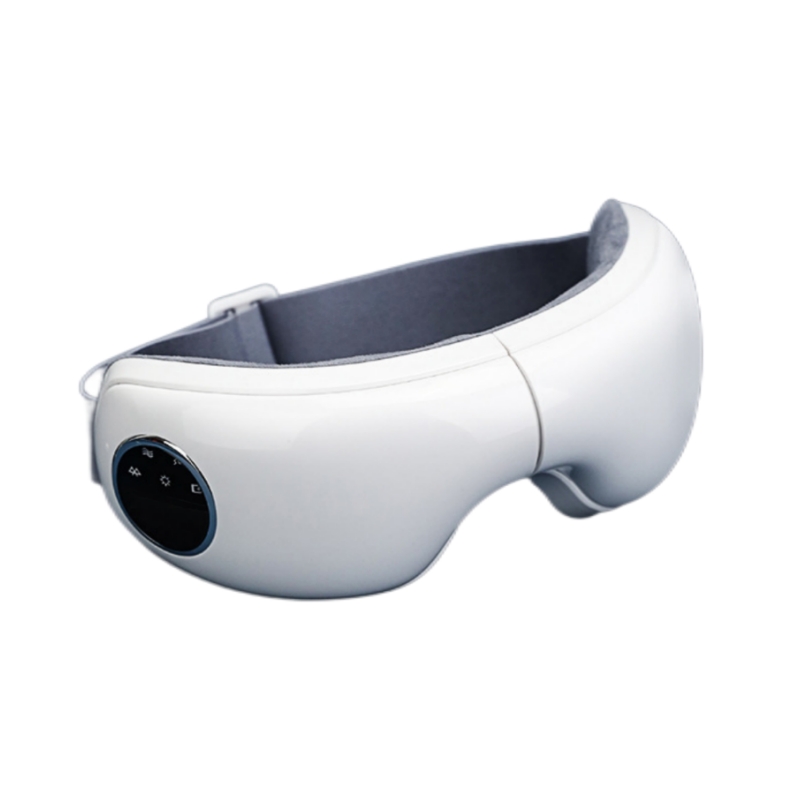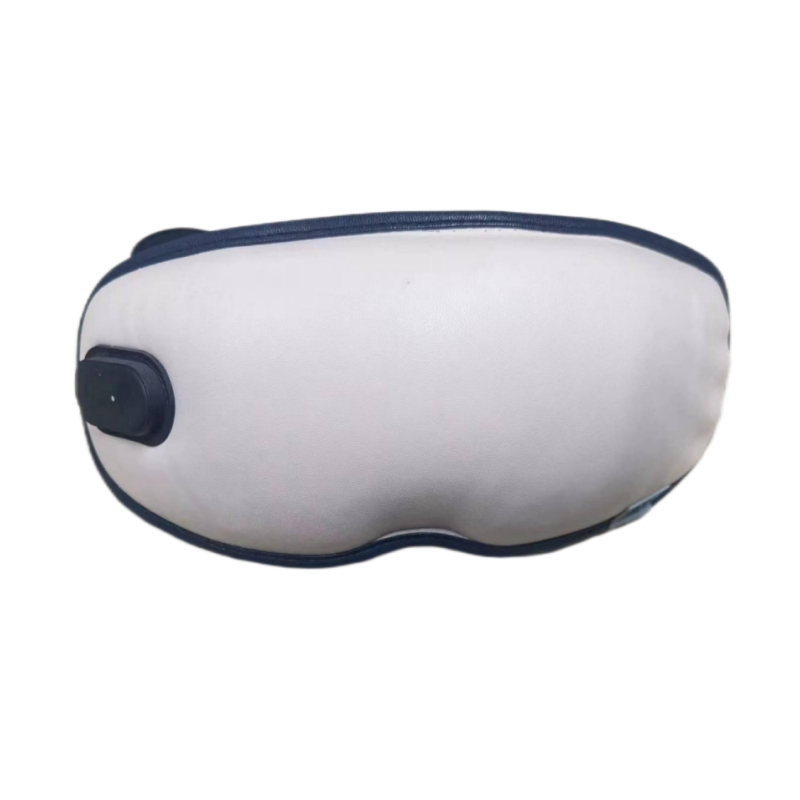How to improve the performance and environmental protection properties of hot and cold eye masks by optimizing material selection and manufacturing process?
Release Time : 2025-04-05
In improving the performance and environmental protection properties of hot and cold eye masks, material selection and manufacturing process play a vital role. By carefully selecting suitable materials and optimizing production processes, not only can the functionality of the product be enhanced, but also the impact on the environment can be reduced to achieve sustainable development goals.
First of all, natural and renewable resources should be given priority in material selection. For example, the use of organic cotton as eye mask fabric is not only soft and comfortable, but also breathable, which can effectively avoid skin discomfort caused by long-term wear. In addition, as a sustainable raw material, the production process of organic cotton reduces the use of chemical pesticides and fertilizers, which helps environmental protection. For fillers, materials with excellent moisture absorption and perspiration functions such as bamboo charcoal fiber or activated carbon can be selected. These materials can not only provide good temperature control effects, but also have antibacterial and deodorizing functions, bringing a healthier experience to users.
In order to further improve the environmental protection properties of hot and cold eye masks, exploring the application of biodegradable plastics in eye mask structural parts is a direction worth trying. Traditional plastic products are often difficult to degrade, which puts a heavy burden on the environment. Using bio-based plastics such as polylactic acid (PLA) to make the outer shell or other non-skin contact parts of the eye mask can significantly reduce the harm to the environment after disposal while ensuring the durability and aesthetics of the product. This material comes from renewable resources such as corn starch and can be naturally decomposed under certain conditions, which is in line with the modern green consumption trend.
In addition to the selection of materials, optimizing the manufacturing process is also one of the key factors in improving product performance and environmental protection. For example, using advanced hot pressing technology instead of traditional bonding methods to assemble the components of the eye mask can reduce the use of glue or even completely avoid the use of harmful chemicals, thereby reducing VOCs (volatile organic compounds) emissions and reducing the impact on air pollution. At the same time, hot pressing can also improve production efficiency, shorten processing time, and help energy conservation and emission reduction.
On the premise of ensuring product quality, it is equally important to promote the concept of lean production. This means that every link from design to production must pursue high efficiency and low consumption. For example, accurately calculate the amount of raw materials required for each component to minimize waste; optimize the layout of the production line to make the material flow smoother and reduce unnecessary handling and waiting time. In addition, the introduction of automated equipment for precise control can not only ensure that each product meets high quality standards, but also significantly reduce the errors and losses caused by manual operation.
Finally, considering the service life of hot and cold eye masks and their subsequent disposal, brand owners can also promote recycling by designing easy-to-disassemble product structures. For example, components of different materials are designed in a modular form, which is convenient for consumers to classify and recycle them after the product life ends, which not only improves resource utilization but also reduces waste disposal costs. At the same time, actively carrying out old product recycling programs and encouraging users to return hot and cold eye masks that are no longer used to the company for reprocessing or proper disposal reflects the company's commitment to social responsibility.
In short, by comprehensively using high-quality environmentally friendly materials, advanced manufacturing technology and innovative design concepts, it is entirely possible to create hot and cold eye masks products with excellent performance and environmental friendliness. This is not only an effective way to meet consumers' growing health and environmental protection needs, but also an important step in promoting the entire industry to move towards green and sustainable development.
First of all, natural and renewable resources should be given priority in material selection. For example, the use of organic cotton as eye mask fabric is not only soft and comfortable, but also breathable, which can effectively avoid skin discomfort caused by long-term wear. In addition, as a sustainable raw material, the production process of organic cotton reduces the use of chemical pesticides and fertilizers, which helps environmental protection. For fillers, materials with excellent moisture absorption and perspiration functions such as bamboo charcoal fiber or activated carbon can be selected. These materials can not only provide good temperature control effects, but also have antibacterial and deodorizing functions, bringing a healthier experience to users.
In order to further improve the environmental protection properties of hot and cold eye masks, exploring the application of biodegradable plastics in eye mask structural parts is a direction worth trying. Traditional plastic products are often difficult to degrade, which puts a heavy burden on the environment. Using bio-based plastics such as polylactic acid (PLA) to make the outer shell or other non-skin contact parts of the eye mask can significantly reduce the harm to the environment after disposal while ensuring the durability and aesthetics of the product. This material comes from renewable resources such as corn starch and can be naturally decomposed under certain conditions, which is in line with the modern green consumption trend.
In addition to the selection of materials, optimizing the manufacturing process is also one of the key factors in improving product performance and environmental protection. For example, using advanced hot pressing technology instead of traditional bonding methods to assemble the components of the eye mask can reduce the use of glue or even completely avoid the use of harmful chemicals, thereby reducing VOCs (volatile organic compounds) emissions and reducing the impact on air pollution. At the same time, hot pressing can also improve production efficiency, shorten processing time, and help energy conservation and emission reduction.
On the premise of ensuring product quality, it is equally important to promote the concept of lean production. This means that every link from design to production must pursue high efficiency and low consumption. For example, accurately calculate the amount of raw materials required for each component to minimize waste; optimize the layout of the production line to make the material flow smoother and reduce unnecessary handling and waiting time. In addition, the introduction of automated equipment for precise control can not only ensure that each product meets high quality standards, but also significantly reduce the errors and losses caused by manual operation.
Finally, considering the service life of hot and cold eye masks and their subsequent disposal, brand owners can also promote recycling by designing easy-to-disassemble product structures. For example, components of different materials are designed in a modular form, which is convenient for consumers to classify and recycle them after the product life ends, which not only improves resource utilization but also reduces waste disposal costs. At the same time, actively carrying out old product recycling programs and encouraging users to return hot and cold eye masks that are no longer used to the company for reprocessing or proper disposal reflects the company's commitment to social responsibility.
In short, by comprehensively using high-quality environmentally friendly materials, advanced manufacturing technology and innovative design concepts, it is entirely possible to create hot and cold eye masks products with excellent performance and environmental friendliness. This is not only an effective way to meet consumers' growing health and environmental protection needs, but also an important step in promoting the entire industry to move towards green and sustainable development.







